Descriptive Inorganic Final Exam Review PDF

| Title | Descriptive Inorganic Final Exam Review |
|---|---|
| Author | Grayson Ard |
| Course | Inorganic Chemistry |
| Institution | Texas State University |
| Pages | 17 |
| File Size | 950.4 KB |
| File Type | |
| Total Downloads | 188 |
| Total Views | 342 |
Summary
Descriptive Inorganic Final Exam Review: Exam I Nuclear Chemistry: Important Particles: Name: Proton Neutron Alpha Beta Gamma Neutrino Positron Terms Symbol: ( hn (or g) ne Top Atomic weight Bottom Atomic (charge) Half Life: The of a radioactive element is the time required for the element to decay ...
Description
Descriptive Inorganic Final Exam Review: Exam I – Nuclear Chemistry: Important Particles: Name: Proton Neutron Alpha Beta Gamma Neutrino Positron
Symbol: " "p " $n ( 'He $ *" 𝑒
hn (or g) ne $ + "𝑒 *Refresher – Top # = Atomic weight Bottom # = Atomic # (charge)
Terms – Half Life: The half-life of a radioactive element is the time required for the element to decay to half of the original amount. Isotope: a form of a chemical element whose atomic nucleus contains a specific number of neutron s, in addition to the number of protos that uniquely defines the element. Nuclear Binding Energy: is the minimum energy that would be required to disassemble the nucleus of an atom into its component parts. Proton-Proton Chain General Reaction: 4 1H ® 4He + 2 0e+ + 2 ne Nuclear Binding Energy: Determined by the mass defect, which is the difference between the mass of the nucleus and the sum of the masses of its nucleons. This mass difference can be converted into energy using Einstein’s equation. The energy is often expressed as the energy per nucleon by dividing the calculated energy by this value. Example: 4He Isotope mass: 4.002602amu Nucleon mass: 2 protons + 2 neutrons = 2(1.00783amu)+2(1.00867amu) = 4.0330amu Mass defect = 𝑚𝑎𝑠𝑠/01234/5 − 𝑚𝑎𝑠𝑠73 = 4.0330 − 4.002602 = 0.0304 amu Convert to kg: 0.0304(1.6606 ∗ 10*'B) = 5.05 ∗ 10*'Ekg Energy in Joules: E = mc2 = (5.05*10-29kg)(2.9979*108 m/s)2 = 4.54 x 10-12 J/nucleus Energy in MeV: 4.54x10-12J (1MeV/1.602x10-13J) = 28.3MeV Energy in MeV/nucleon: 28.3MeV/4 nucleons = 7.1MeV/nucleon Example: 13C Isotope Mass: 13.003amu Mass of proton: 1.0073amu Mass of neutron: 1.0087amu Nucleon mass: 6 protons + 7 neutrons = 6(1.0073amu)+7(1.0087amu) = 13.1047amu Mass defect: 13.1047amu – 13.003amu = 0.1017amu Mass defect in kg: 0.1017amu(1.6606x10-27kg/amu) = 1.6888x10-28kg Energy in Joules: E = mc2 = (1.68x10-28kg)(3.00x108m/s)2 = 1.5199x10-11J/nucleus
Energy in MeV: 1.52x10-11J(1MeV/1.602x10-19J) 94.9 MeV Energy in MeV/nucleon: 94.9MeV/ 13 nucleons = 7.30MeV Balancing Nuclear Equations: Common Decay Mechanisms – Alpha Decay: 'GH ( 'G( E'𝑈 → ' 𝐻𝑒 + E$ 𝑇ℎ Beta Decay: 'B( $ 'B( E$𝑇ℎ → *" 𝑒 + E"𝑃𝑎 + 𝜈P3 Electron Capture: 'S $ 'S "G𝐴𝑙 + *"𝑒 → "'𝑀𝑔 + 𝜈3 Positron Emission: 'S 𝐴𝑙 → $"𝑒 + + 'S "' 𝑀𝑔 + 𝜐3 When an electron is produced, so is an antineutrino. When a positron is produced, so is a neutrino When an electron fuses with a proton, it produces a neutrino. Proton-Neutron Ratio in Stable Elements 𝛽 emission
𝛼 emission
Decay Mechanisms: • When the nucleus is very massive, alpha decay is common to reduce the mass (fission is also possible) • When a nucleus has a n/p ratio that is too high, beta decay is common. • When the n/p ratio is Example: Predict whether the following will react via alpha decay, beta decay, or positron emission.
a) b) c)
B
𝐵𝑒 – positron 𝑃𝑢 – alpha GG 𝑃 – beta
'GH
Example Question: What is the expected product when '('𝑃𝑢 decays by its most likely mechanism? - '('𝑃𝑢 is expected to undergo alpha decay and produce 'GH𝑈 *The earth is composed of accumulated elements approximately distributed by density Atomic Structure: " " " Rydberg: [ = 𝐶('] − /]) Frequency/Wavelength: 𝑐 = 𝜆𝑣 Plank: 𝐸 = ℎ𝑣 " " Bohr Equation: 𝐸 = 𝑅7 ( ] − ] ) / / c
Bohr Model: 𝑅7 =
d
'e]fg ]3 h (eij
• Assumptions: e- moves between set radii • Problem: Orbiting change would emit energy Atomic Orbitals: Schrödinger Equation is used to model electrons as standing waves. 𝐻Ψ = 𝐸Ψ H = operator -> potential/kinetic energy Ψ = wave function (orbitals “shape” of electron) E = Energy Atomic Wave Functions Quantum Numbers: *Four variables in each wave function Ψ Symbol Name Values n Principle 1,2,3,…,any positive integer ℓ Angular 0,…,n-1 ml Magnetic -l…+l Ms Spin -1/2 or +1/2 ℓ Name
0 S
1 P
2 d
Examples: What quantum numbers are associated with – 5p: n=3 ℓ=1 5d: n=5 ℓ=2 Name – n=2, ℓ=1: 2p n=4, ℓ=3: 4f What are possible values of ml for a 6d orbital? n=6, ℓ=2: ml=-2,-1,0,1,2 How many possible orbitals (combinations of l, ml) for n=3? n=3 ℓ=0,1,2
3 F
Effect Energy of eSets the shape Orientation
4 G
5 H
3s: when ℓ=0, ml=0 3p: when ℓ=1, ml=-1,0,1 3d: when ℓ=2, ml=-2,-1,0,1,2 Drawing s, p, d, orbitals:
1s
2pz
2s
3s
3pz
4pz
Nodes: • Total number of nodes = n-1 • Number of nonspherical nodes = l • (number of spherical nodes = n-l-1) Examples: 4s: 3 total nodes; all spherical 3d: 2 total nodes; both nonspherical 6p: 5 total nodes; 1 nonspherical, 4 spherical 7f: 6 total nodes ; 3 nonspherical, 3 spherical Orbital Energies: Shielding: electrons “block” some of the positive charge of the nucleus so some of the outer electrons do not receive the full charge.
Hydrogen vs Everything else: Hydrogen only has 1 e- so only n matters. Electron Configurations: Aufbau Principle – lowest energy first Pauli Exclusion Principle – no two electrons may have the same n, l, ml, or ms Hund’s Rule – spin is maximized in the ground state Examples: Cr: [Ar]4s13d5 Note: Looks like it should be – [Ar]4s23d4 however, the stability of the first is because it is more entropically favorable and minimizes spin repulsion. Mo: [Kr]5s14d5 Ru: [Kr]5s14d7 *Good Link Covering *Electron configurations of transition metals Spin Pairing Energy Cr3+: [Ar]3d3 Mo4+: [Kr]4d2 Zn2+: [Ar]3d10 *Note: Metals always lose their s electrons first Coulombic Repulsion ( Π1): Repulsive forces between paired electrons Example: ↿⇂ ↿⇂p↿p↿ Oxygen: [He] = 2Π1 (valence) '5 q This is unfavorable because the electrons occupy the same space causing electrostatic repulsion due to like charges. Exchange Energy: Exchange energy is the energy released when two or more electrons with the same spin exchange their positions in the degenerate orbitals of a subshell. Scales with the number of ‘like’ pairs of electrons Can be estimated using the formula:
(/)(/*") '
where n= the number of similar electrons
Examples: p2: ↿p↿ __; n=2 – (2)(2-1)/2 = 1 Π3 d4: ↿p↿p↿p↿ ;__p n=4 – (4)(4-1)/2 = 6 Π3 ; n=5 and n=2 – 5(5-1)/2 = 10 Π3 and (2)(2-1)/2 = 1 Π3 d7: ↿⇂p↿⇂p↿p↿p↿ Total: 11 Π3 Effective Nuclear Charge: Electrons screen each other from the nucleus. Inner electrons screen outer electrons more effectively than electrons in the same shell. Z* = Z – S Where Z* is the effective nuclear charge, Z is the original nuclear charge (atomic #) and S is the calculated screening constant. Slater’s Rules: Used to estimate the effective nuclear charge for a given electron in an atom. 1. Group orbitals by increasing n (1s)(2s,2p)(3s,3p)(3d)(4s,4p)(4d)(4f), etc… 2. Electrons in groups to the right do not shield groups to the left d & f orbitals do not block s or p orbitals 3. For ns or np electrons: a. Electrons in the same group contribute 0.35 to S b. Electrons in n-1 groups contribute 0.85 to S c. Electrons in n-2 or lower groups contribute 1 to S 4. For nd or nf electrons: a. Electrons in the same group contribute 0.35 to S b. Electrons in lower groups contribute 1 to S.
Example: Using Slater’s Rules, calculate the effective nuclear charge for a 3d electron of a Vanadium (V) atom. S = (1s2)(2s2,2p6)(3s2,3p6)(3d3)(4s2) -> 2(1)+8(1)+8(1)+2(0.35)+2(0) = 18.7 Z = atomic number of V = 23 Z*=Z – S = 4.30 Note: Do not count the electron being calculated because It does not feel itself. This is the reason why there are only 2 electrons in the 3d orbital being calculated. Periodic Trends:
Trends in First Ionization Energy: • Decreases down a group because of increasing radii. Electrons are further away from the nucleus holding the atom together. • Increases across a period because of incomplete shielding of nuclear charge within a shell. Trends in Atomic Radii: • Challenges due to e- clouds distorting during bonding. • Negative charges increase the radius, positive charges decrease the radius.
Example: Predict which is the largest among the following: - Ga, Si, N o Ga > Si > N due to the increase in n and increase in Z*. 2+ - Fe , Co+, Ni o Ni > Co+ > Fe2+ neutral elements are all similar in size however positive charge causes the radius to be smaller. Molecular Structure: The Octet Rule: • Main group compounds only (not transition metals) • Based on filling bonding orbitals formed from s and p atomic orbitals. Lewis Structure:
Construct skeleton o Central atom usually has the least valence electrons (least electronegative) o If equal – largest atom is in the center (least electronegative) • Count valence electrons • Fill electrons from outside in (most electronegative) • If not octets: o Multiple bonds if deficient o Extra electrons are placed on central atom Formal Charge: FC = # Valence Electrons – # Lone Pair Electrons – ½ # Bonding Pair Electrons Examples: NH4+ •
H wants 1 e- -> N owns 4e- and wants 5e- giving a formal charge of +1 ClO3-
-
Oxygen owns 7e- wants 6e- giving a formal charge of -1(3 Oxygen) = -3 Chlorine owns 5e- wants 7e- giving a formal charge of +2 Formal Charge = -3 + 2 = -1 “Non-octet” structures: Hypervalent: exceeds octet Example: SF6 o MO theory predicts a bond order of 4 o Nonbonding resonance: anytime >8e-on the center bond resonates to the most electronegative element.
-
Hypovalent: octet insufficient Example: BF3 – solution is Pi Bonding o Resonance Structures
*Note: Hypovalent structures are often stabilized by polymerizing with bridging atoms (reference: BeH3) VSEPR – • AXmEn notation (X: atom, E: lone pair) • ‘Steric Number’ (electron domains) Steric Number Shape 2 Linear 3 Trigonal Planar 4 Tetrahedral 5 Trigonal Bipyramidal 6 Octahedral
Bond Angle 180° 120° 109.5° 90°,120° 90°
Bond Angles Trend: Electronegativity pulls the atom closer causing the radius to decrease. Ligand Close Packing: Outer atoms are always touching. • As the radii on the central atom increases, the bond angles decrease. • As the outer atom increases, bond angle increases Lone Pair Effects: atoms want to be squished together to distort bond angle Multiple Bond Effects: In a molecule such as COF2, the double bond moves carbon closer to the oxygen to make the angle more acute. Electronegativity: Very electronegative atoms make central atom smaller Originally proposed by Linus Pauling to explain the bond enthalpy between dissimilar elements. 𝐻(𝛿 +) − 𝐶𝑙(𝛿−) Molecular Polarity: Dipole Moment – How well a molecule orients in a field. Competing lone pairs decrease the measured dipole moment. Hydrogen bonding with elements that are more electronegative (N,O,F) cause an increase in boiling point.
Molecular Orbitals: Terms – Bonding – a lasting attraction between atoms, ions or molecules that enables the formation of chemical compounds Antibonding – is a type of molecular orbital (MO) that weakens the bond between two atoms and helps to raise the energy of the molecule relative to the separated atoms. Sigma Bond – single bonds Pi Bonds – Delta Bonds – Exam II – Acids & Bases: • Acids: o Proton donor (H+) o Electron Acceptor • Bases: o Proton acceptor o Electron donor Solvent System Approach: An acid increases the concentration of the cationic form of the solvent. Examples: Acids in water increase [H3O+] Bases in ammonia increase [NH2-] Trends in acidity: Binary Hydrides: • Across a row (𝑙 → 𝑟) acidity increases • Down a group acidity increases Trends in Oxoacidity: • Bell’s Rule: pka = 8-5n (n = # free hydrogens) • Larger the atom, the weaker the bond *Only for Oxoacids* - electronegative central atom = more acidic Metal Cations: • Metal cations are acids • Ligands are Lewis bases Trends in metal-ligand interactions Metals (acids): Ligands: • Most metal ions are • Soft bases have low charges, considered “hard” large radii, with low electronegatively bonding atoms. • Soft metals are large with a low positive charge Metal cations as acids:
Lower charge density -> less acidic *Charge matters more *Note: When predicting acidity, the anion does not matter.
Patterns in metal-ligand interactions: Solubility of Halides: (Least Soluble) LiF (Hard) < LiCl < LiBr < LiI (Most Soluble) (Least Soluble) AgI (Soft)...
Similar Free PDFs

Chem Final Exam Review
- 12 Pages

Final Exam - Review notes
- 92 Pages

Bio Final Exam Review
- 2 Pages

Final EXAM Review booklet
- 5 Pages
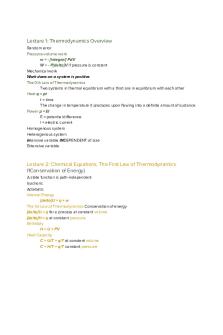
CHEM303 final exam review
- 4 Pages

Psychology Final Exam - Review
- 13 Pages
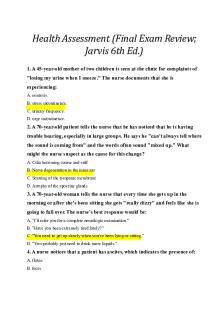
Jarvis Final Exam Review
- 12 Pages
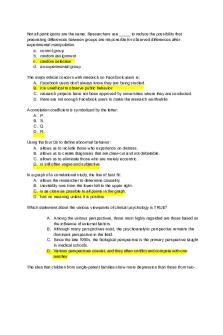
Final exam review
- 96 Pages
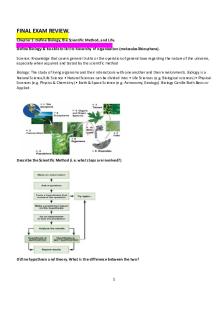
Final Exam Review
- 48 Pages
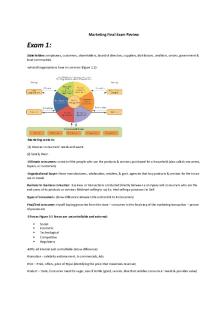
Marketing Final Exam Review
- 15 Pages
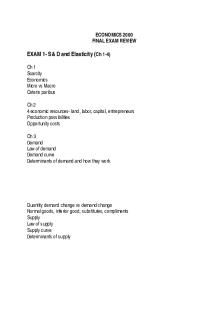
Final exam review
- 8 Pages
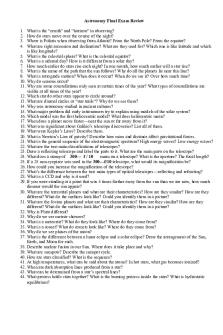
Astronomy Final Exam Review
- 2 Pages
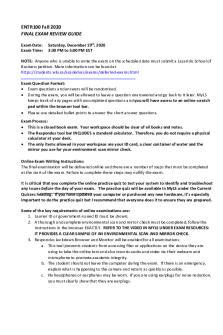
Final Exam Review Guide
- 4 Pages

Final exam review flsp4420
- 5 Pages

Theo Final Exam Review
- 16 Pages
Popular Institutions
- Tinajero National High School - Annex
- Politeknik Caltex Riau
- Yokohama City University
- SGT University
- University of Al-Qadisiyah
- Divine Word College of Vigan
- Techniek College Rotterdam
- Universidade de Santiago
- Universiti Teknologi MARA Cawangan Johor Kampus Pasir Gudang
- Poltekkes Kemenkes Yogyakarta
- Baguio City National High School
- Colegio san marcos
- preparatoria uno
- Centro de Bachillerato Tecnológico Industrial y de Servicios No. 107
- Dalian Maritime University
- Quang Trung Secondary School
- Colegio Tecnológico en Informática
- Corporación Regional de Educación Superior
- Grupo CEDVA
- Dar Al Uloom University
- Centro de Estudios Preuniversitarios de la Universidad Nacional de Ingeniería
- 上智大学
- Aakash International School, Nuna Majara
- San Felipe Neri Catholic School
- Kang Chiao International School - New Taipei City
- Misamis Occidental National High School
- Institución Educativa Escuela Normal Juan Ladrilleros
- Kolehiyo ng Pantukan
- Batanes State College
- Instituto Continental
- Sekolah Menengah Kejuruan Kesehatan Kaltara (Tarakan)
- Colegio de La Inmaculada Concepcion - Cebu
